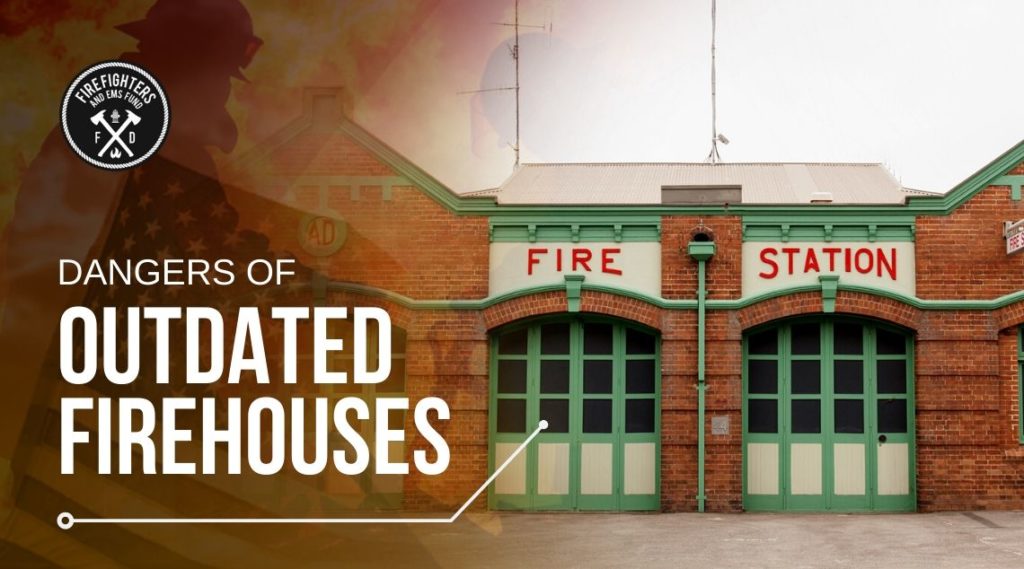The job of a firefighter isn’t what it used to be. Outside of responding to fire emergencies, firefighters treat sick or injured people, report to civilian disturbances, extricate people from damaged motor vehicles, and assist at hazardous materials spills. You might even see one at your local elementary school, providing public education on fire safety. While the scope of what firefighters are responsible for has expanded, the condition of their stations, equipment, and technology have dwindled. In fact, dilapidated firehouses are more common than updated and efficient stations. These are the structural issues that are keeping firehouses in the past, and why it’s so difficult to resolve them.
The National Fire Protection Association identified the five most pressing renovation needs for Fire Stations across the US in their report earlier this year. The common factor between stations with the largest renovation issues was the age of the station. According to the report, more problems are present in fire stations that are over 40 years old. And shockingly, 43% of all US fire stations fall into this category. These stations are more likely to have problems that cannot be resolved through repair and maintenance alone, and instead need to be entirely replaced. A shortage of funding, including tight budgets and an absence of grants to support the construction of new fire stations, helps explain the high percentage of older stations.

Unfortunately, the issues don’t stop at aging stations, and even newer construction are in need of repair. Lack of exhaust emission control can be found in thousands of stations across the US. According to the NFPA report, “when a diesel-powered fire apparatus leaves or returns to a fire station, it generates hazardous emissions that can spread throughout the apparatus bay and living quarters. If the exhaust is not properly captured, firefighters can be exposed to diesel exhaust for an extended portion of their shifts (Baldwin).” Prolonged exposure to diesel exhaust increases the risk of lung cancer, cardiovascular disease, and other fatal illnesses. This exposure is mitigated by exhaust emission control systems, and prevents firefighters and the public from ingesting dangerous amounts of exhaust. It should be assumed that all fire stations would be equipped with these systems, but 59% of all US fire stations do not have proper emission control. Why? To have a system professionally installed costs between $40 and $60 thousand, an unfathomable amount for most stations that that rely on public approval for funding.
The list of other needed updates continues. 35% of fire stations in the US aren’t equipped with backup power, a critical piece of technology that keeps stations up and running during emergencies. Without one, firefighters are unable to answer phones, run computers, fuel trucks and open garage doors. Based on the information provided by FEMA and Resource Solutions, a typical fire station generator installation is estimated to cost roughly $50,000 to $100,000.
Most older stations were built before female firefighters were common. As the number of female firefighters continues to increase, many fire departments are recognizing a need to retrofit fire stations to accommodate them. These renovations include the construction of separate bathroom facilities, separate shower facilities, and partitions in sleeping quarters. Pricing to complete these updates varies widely based on location, layout, and the size of the fire station, but in 2015, the New York Fire Department estimated that it would cost $50 million in order to update 47 stations to accommodate female works.
One of the most immediate threats if renovations aren’t made might surprise you; mold. Water damage, prolonged humidity, and dampness due to flooding all lead to increased risk for mold, and increased health problems for firefighters. While exposure in small doses can produce troubling yet harmless symptoms like nasal stuffiness, eye irritation, and sneezing, exposure at high levels can cause hypersensitivity pneumonitis, which has similar symptoms to pneumonia. According to the report, the Nashville, TN Fire Department tested all of its fire stations in 2011 after a firefighter was diagnosed with respiratory issues relating to mold. The inspectors discovered mold in 33 of the 37 fire stations tested during the assessment. While the cost of mold remediation varies widely based on the extent of the damage, the report cites two projects:
“While the Conroe Fire Station mold remediation project cost roughly $90,000, the South Portland Fire Department required major renovations with a project estimate of $1.3 million.”
Replacing all the aging and dilapidated stations in need would roughly cost $70 billion to $100 billion, according to the NFPA report. Fire departments, especially those that are small, face factors that severely restrict their finances; limited systems of funding, inefficiencies at the leadership level, and limited public awareness. These make it near impossible to make updates to firehouses, equipment, and technology that allows firefighters to protect their communities, and themselves in the process. The Fire and EMS fund recently shared a story about the Fairview Fire District in New York, and the multitude of these issues they are facing. We understand the severity of such issues and support America’s fire departments needs for awareness and funding.
Are you a leader in your local fire department? Or is your local department suffering from these same problems? We’d love to shine a light on these issues and help you tell your story. Contact our Executive Director at nile@fireandemsfund.com to share your story.









